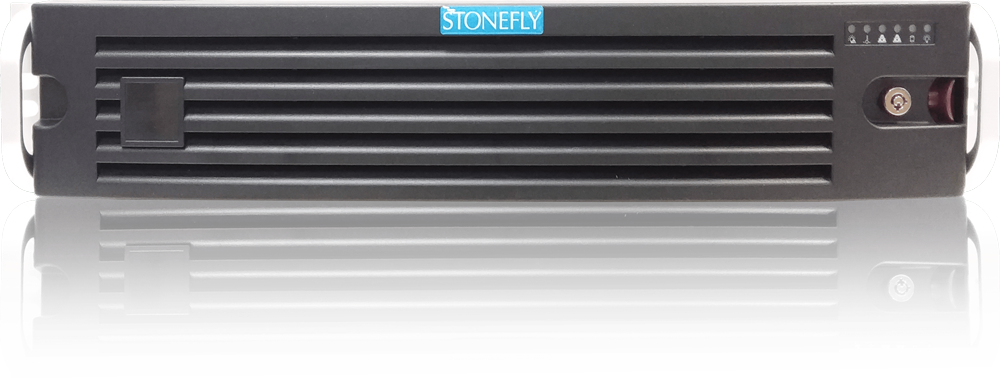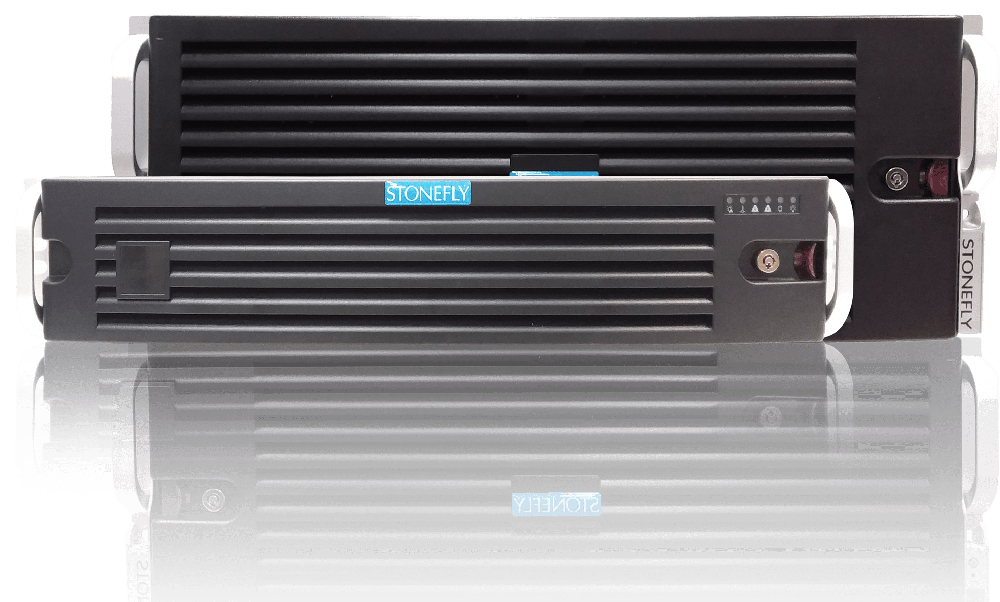Malvertising—once a shadowy threat lurking on the fringes of cybersecurity discourse—has emerged as a formidable adversary, directly targeting enterprises in the digital arena. As businesses increasingly rely on online advertising to connect with their audience, malicious actors exploit this channel to inject malware, compromise systems, and wreak havoc. In this comprehensive guide, we’ll delve into the depths of malvertising, dissecting its definition, evolution, impacts, tactics, detection strategies, notable case studies, and future trends.
What is Malvertising?
Malvertising, a portmanteau of “malicious advertising,” refers to the practice of using online advertisements to distribute malware. It’s a sophisticated cyber threat where attackers exploit the trust users place in online ads to infiltrate systems and networks. Malvertising campaigns often utilize legitimate ad networks to deliver malicious content, making them particularly challenging to detect and mitigate.
At its core, malvertising involves injecting malicious code or links into online advertisements, which can lead users to inadvertently download malware onto their devices or redirect them to malicious websites. The malware distributed through malvertising can range from relatively benign adware to more harmful forms like ransomware, spyware, or banking trojans.
How Malvertising has Evolved and Grown in Recent Years
Malvertising has evolved significantly over the years, both in sophistication and prevalence. Initially, malvertising primarily targeted individual users through malicious pop-up ads or fake download buttons on sketchy websites. However, with the increasing popularity of online advertising and the complexity of ad networks, malvertising has become a lucrative attack vector for cybercriminals targeting not only individuals but also enterprises.
One factor driving the growth of malvertising is the widespread adoption of programmatic advertising, which automates the buying and selling of online ads in real-time. While programmatic advertising offers efficiency and scalability for advertisers, it also introduces vulnerabilities that malicious actors exploit to deliver malware at scale.
Furthermore, the rise of malvertising has been fueled by the extensive tracking and profiling of users’ online activities for targeted advertising purposes. Ad networks often collect vast amounts of user data, which can be leveraged by attackers to personalize malicious ads and increase the likelihood of successful infections.
As malvertising continues to evolve, enterprises face mounting challenges in defending against these threats. The consequences of falling victim to malvertising can be severe, ranging from financial losses and data breaches to reputational damage and legal liabilities.
How Malvertising Works
A. Advertising Networks: The Vehicle for Malware
Advertising networks serve as the primary conduit for malvertising campaigns. These networks act as intermediaries between advertisers and publishers, facilitating the placement of ads on websites and mobile apps. Malicious actors exploit the infrastructure of ad networks to disseminate malware to a wide audience. Here’s how it typically happens:
- Infiltrating Ad Networks: Malicious actors often use various tactics to infiltrate legitimate ad networks. This could involve compromising the ad network’s servers, exploiting vulnerabilities in the network’s infrastructure, or impersonating legitimate advertisers to gain access.
- Injecting Malicious Code: Once inside the ad network, attackers inject malicious code or links into legitimate advertisements. This code is designed to exploit vulnerabilities in users’ web browsers or plugins, allowing attackers to execute arbitrary commands or download malware onto users’ devices.
- Distribution of Malicious Ads: The tainted advertisements are then distributed across the ad network’s vast network of websites and apps. These ads may appear on popular websites, news portals, or even trusted platforms, increasing the likelihood of unsuspecting users encountering them.
- Targeted Delivery: Malvertisers often employ sophisticated targeting techniques to ensure their malicious ads reach specific demographics or geographic regions. By leveraging the vast amount of user data collected by ad networks for targeted advertising, attackers can tailor their campaigns to maximize their effectiveness.
As a result, even reputable websites and trusted platforms can inadvertently serve malicious ads to their visitors, making malvertising a pervasive threat that affects users across the internet.
B. Exploiting Vulnerabilities: Techniques Employed
Malvertising campaigns exploit various vulnerabilities to deliver malware to unsuspecting users. These vulnerabilities may exist in web browsers, plugins, or operating systems, allowing attackers to execute malicious code and compromise users’ devices. Some common techniques employed by malvertisers include:
- Exploit Kits: Malvertising often involves the use of exploit kits—sophisticated tools that automate the process of identifying and exploiting vulnerabilities in users’ systems. When a user clicks on a malicious ad, the exploit kit scans their device for known vulnerabilities and delivers tailored malware payloads based on the detected weaknesses.
- Zero-Day Exploits: In some cases, malvertisers leverage zero-day exploits—previously unknown vulnerabilities in software or hardware—to deliver malware. Zero-day exploits are particularly dangerous as they allow attackers to compromise systems before vendors have had a chance to develop and release patches.
C. The Role of Redirects and Social Engineering
Redirects and social engineering play crucial roles in the success of malvertising campaigns:
- Redirects: Malicious ads often use redirection techniques to lead users to malicious websites or exploit kits. When a user clicks on a seemingly innocuous ad, they may be redirected through a series of URLs before landing on a page hosting malware. These redirection chains obfuscate the true origin of the malicious content, making it harder for security systems to detect and block.
- Social Engineering: Malvertisers leverage social engineering techniques to manipulate users into interacting with malicious ads. This could involve creating enticing offers, alarming security alerts, or fake system messages to prompt users to click on the ads or download malicious content. By exploiting users’ trust and curiosity, malvertisers increase the likelihood of successful infections.
Common Tactics Used in Malvertising Campaigns
Malvertising campaigns employ various tactics to distribute malware and compromise user devices and enterprise networks. Understanding these tactics is crucial for enterprises to effectively mitigate the risks posed by malvertising. Here are some of the most prevalent techniques used by malvertisers:
Drive-By Downloads: Leveraging Vulnerabilities, Silent Infections, and Payload Delivery
Drive-by downloads are a prevalent malvertising tactic wherein users inadvertently download malware onto their devices simply by visiting a compromised website or clicking on a malicious advertisement. This technique leverages vulnerabilities in web browsers, plugins, or operating systems to execute arbitrary code and install malware without the user’s knowledge or consent.
- Exploiting Vulnerabilities: Malvertisers often exploit known vulnerabilities in popular web browsers or plugins to deliver malware through drive-by downloads. These vulnerabilities can range from outdated software versions to unpatched security flaws, allowing attackers to execute malicious code on users’ devices.
- Silent Infections: Drive-by downloads typically occur silently in the background, without any indication to the user that malware is being installed. This stealthy approach increases the likelihood of successful infections and makes it challenging for users to detect and mitigate the threat.
- Payload Delivery: Once the user’s device is compromised, malvertisers can deliver various types of malware through drive-by downloads, including adware, spyware, banking trojans, and ransomware. The specific payload deployed depends on the attacker’s objectives and the vulnerabilities present on the target system.
Phishing Attacks: Exploiting Impersonation, Social Engineering, and Credential Theft
Phishing attacks are another common malvertising tactic used to trick users into divulging sensitive information such as login credentials, financial data, or personal details. Malvertisers employ deceptive tactics to impersonate trusted entities and lure users into clicking on malicious ads or visiting fraudulent websites.
- Impersonation: Malvertisers often impersonate reputable brands, financial institutions, or government agencies to gain users’ trust and credibility. They create fake advertisements or landing pages that closely resemble legitimate websites, making it difficult for users to distinguish between genuine and malicious content.
- Social Engineering: Phishing attacks leverage social engineering techniques to manipulate users into disclosing sensitive information. Malvertisers may create urgency by posing as a bank warning of a security breach or offer enticing rewards to entice users to click on malicious ads or provide personal information.
- Credential Theft: The primary objective of phishing attacks is to steal sensitive information such as login credentials or financial data. Once users fall victim to these attacks, malvertisers can use the stolen information for various malicious activities, including identity theft, financial fraud, or unauthorized access to accounts.
Ransomware Distribution: Through Malicious Ads, Exploit Kits, and Data Encryption and Extortion
Ransomware distribution via malvertising has become increasingly prevalent, posing significant risks to enterprises’ data security and operational continuity. Malvertisers use deceptive tactics to deliver ransomware payloads to users’ devices, encrypting their files and demanding payment in exchange for decryption keys.
- Malicious Ads and Pop-Ups: Malvertisers distribute ransomware through malicious advertisements or pop-ups that prompt users to click on them or download seemingly benign files. These ads often masquerade as legitimate software updates, security alerts, or prize notifications to trick users into interacting with them.
- Exploit Kits: Ransomware distribution may also involve the use of exploit kits, which automatically identify and exploit vulnerabilities in users’ systems to deliver ransomware payloads. Once a user clicks on a malicious ad or visits a compromised website, the exploit kit scans their device for vulnerabilities and initiates the ransomware infection process.
- Data Encryption and Extortion: Upon successful infection, ransomware encrypts the user’s files, rendering them inaccessible until a ransom is paid. Malvertisers typically demand payment in cryptocurrency, offering decryption keys or tools in exchange for ransom payments. Failure to comply with the demands may result in permanent data loss or further extortion attempts.
How to Detect and Prevent Malvertising Campaigns
Malvertising poses a significant threat to enterprises, but with the right detection and prevention strategies in place, organizations can mitigate the risks associated with these malicious campaigns. Here are some effective strategies to defend against malvertising:
Utilizing Ad Blockers and Advanced Filtering Tools
One of the simplest and most effective ways to mitigate the risk of malvertising is by deploying ad blockers and filtering tools across enterprise networks. These tools can intercept and block malicious advertisements before they reach users’ devices, significantly reducing the likelihood of exposure to malvertising campaigns.
- Ad Blocking Software: Ad blockers are browser extensions or standalone applications designed to prevent advertisements from loading on web pages. By blocking potentially malicious ads, these tools can help protect users from inadvertently clicking on malicious content and falling victim to malvertising attacks.
- Content Filtering Solutions: Enterprises can also implement content filtering solutions at the network level to block access to known malicious domains or websites hosting malvertising campaigns. Content filtering tools use predefined blacklists and heuristics to identify and block suspicious content in real-time, providing an additional layer of defense against malvertising threats.
Implementing Comprehensive Web Security Measures
In addition to ad blockers and filtering tools, implementing robust web security measures is essential for detecting and preventing malvertising attacks. Enterprises can adopt a multi-layered approach to web security, incorporating the following measures:
- Web Application Firewalls (WAFs): WAFs can help protect web applications and websites from various cyber threats, including malvertising. These solutions analyze incoming web traffic and filter out malicious content, such as suspicious scripts or payloads embedded in advertisements.
- Intrusion Detection and Prevention Systems (IDPS): IDPS solutions can detect and block malicious activities on enterprise networks, including malvertising-related traffic. By monitoring network traffic for signs of malicious behavior, IDPS solutions can identify and mitigate malvertising attacks in real-time.
- Secure Web Browsing Practices: Educating users about secure web browsing practices is essential for preventing malvertising incidents. Encouraging employees to avoid clicking on suspicious ads, verifying the legitimacy of websites before entering sensitive information, and keeping software up-to-date can help reduce the risk of exposure to malvertising.
Integrating Air-Gapped and Immutable Backup Solutions
While not directly related to detection, having robust backup and disaster recovery mechanisms is crucial for mitigating the impact of malvertising attacks, particularly in the case of ransomware. Air-gapped and immutable backups provide an additional layer of defense against data loss and ensure that organizations can recover critical systems and data in the event of a ransomware infection.
- Air-Gapped Backups: Air-gapped backups are stored offline and disconnected from the primary network, making them immune to cyber attacks like ransomware. By maintaining offline copies of essential data and systems, organizations can ensure rapid recovery and minimize the impact of ransomware attacks.
- Immutable Backups: Immutable backups are stored in a read-only format, preventing them from being altered or deleted by malicious actors. By implementing immutable backup solutions, organizations can protect their backup data from unauthorized modifications, ensuring its integrity and availability during recovery operations.
Recent Malvertising Campaigns
Malvertising incidents continue to plague enterprises, showcasing the evolving tactics and sophistication of cybercriminals. Let’s delve into some recent case studies to understand the intricacies of these attacks and extract valuable lessons from each incident.
Malicious Malvertising Exploits WinSCP Application
In June 2023, a targeted organization fell victim to a sophisticated malvertising campaign. The malicious actors utilized malvertising to distribute malware through cloned webpages of legitimate organizations, with a focus on the popular WinSCP application, an open-source Windows tool for file transfer.
The attack chain commenced when users searched for “WinSCP Download” on search engines like Bing. Malicious advertisements, strategically placed above organic search results, led users to suspicious websites hosting cloned download pages for WinSCP. Upon clicking the “Download” button, users unwittingly downloaded malware payloads, initiating the infection process.
The malware distribution involved several stages, including the downloading of an ISO file from an infected WordPress webpage and the execution of malicious executables masquerading as legitimate WinSCP installers. The attackers employed various tools and techniques, including Python scripts, Cobalt Strike beacons, and PowerShell commands, to establish persistence, escalate privileges, and execute reconnaissance within the victim’s network.
Despite the attackers’ attempts to evade detection and bypass security measures, the organization’s proactive response, aided by the Trend Micro incident response team, thwarted the attack before significant damage occurred. Immediate countermeasures were implemented, and long-term security procedures were recommended to prevent future incidents.
Storm-0216 Campaign: Malvertising Used to Distribute Danabot and Cactus Ransomware
The Storm-0216 threat operation, also known as UNC2198 and Twisted Spider, employed malvertising schemes to deploy the Danabot malware, followed by the distribution of Cactus ransomware on December 2023. This campaign, observed over several months, targeted unsuspecting users through malicious ads served during online searches for popular applications like WhatsApp web.
Danabot, a multi-stage modular banking Trojan, was used to collect user credentials and other sensitive information, which was then transmitted to command-and-control servers. The attackers leveraged Remote Desktop Protocol (RDP) sign-in attempts for lateral movement within compromised networks, ultimately facilitating the deployment of Cactus ransomware.
The threat actors behind the Storm-0216 campaign demonstrated a high level of sophistication, incorporating anti-virus detection techniques and evasive maneuvers during reconnaissance. Despite the attackers’ initial success, proactive threat intelligence and response efforts by security researchers helped uncover and mitigate the ongoing campaign.
GoPIX Malvertising: Exploiting Brazil’s PIX Instant Payment System
In a notable malvertising campaign targeting Brazil’s PIX instant payment system on October 2023, threat actors deployed the GoPIX malware to exploit unsuspecting users searching for popular applications like WhatsApp web. Malicious ads were strategically placed in search engine results, redirecting users to malware landing pages.
The GoPIX malware, characterized by its clipboard-stealing capabilities, hijacked PIX payment requests and replaced them with attacker-controlled strings, ultimately enabling financial fraud. The attackers utilized techniques such as process hollowing and port-based evasion to bypass security measures and deliver the malware payload.
The emergence of GoPIX highlights the evolving landscape of malvertising and the increasing sophistication of cybercriminals. Organizations must remain vigilant and implement robust security measures to defend against such threats and protect sensitive information from exploitation.
Future Trends and Challenges of Malvertising
As the cybersecurity landscape continues to evolve, it’s crucial for enterprises to anticipate future trends and challenges in malvertising to effectively safeguard their digital assets. Let’s explore some potential developments and mitigation strategies for addressing evolving threats.
A. Advancements in Malvertising Techniques
Cybercriminals are constantly innovating and refining their tactics to bypass security measures and maximize the impact of malvertising campaigns. Some potential advancements in malvertising techniques include:
- Sophisticated Targeting: Expect to see more targeted malvertising campaigns tailored to specific industries, regions, or user demographics. Cybercriminals may leverage advanced data analytics and profiling techniques to identify high-value targets and personalize malicious ads for maximum effectiveness.
- Fileless Malware: With the rise of fileless malware, cybercriminals can execute malicious code directly in memory without leaving traces on disk, making detection and analysis more challenging. Future malvertising campaigns may increasingly leverage fileless techniques to evade traditional security solutions.
- Steganography: Steganography, the practice of concealing malicious code within legitimate images or multimedia files, presents a significant challenge for detection. Malvertising attacks may leverage steganography to hide exploit payloads or command-and-control communications within seemingly innocuous advertisements.
- Zero-Day Exploits: Zero-day exploits targeting newly discovered vulnerabilities in software or web browsers can provide cybercriminals with a potent weapon for malvertising campaigns. Future malvertisers may invest in zero-day research or exploit brokers to acquire exclusive access to undisclosed vulnerabilities.
B. Mitigation Strategies for Evolving Threats
To counter the evolving threat landscape of malvertising, enterprises must adopt proactive mitigation strategies that adapt to emerging trends. Here are some key strategies for defending against evolving malvertising threats:
- Continuous Monitoring and Threat Intelligence: Implement robust threat intelligence programs to stay informed about emerging malvertising tactics, techniques, and indicators of compromise (IOCs). Leverage threat intelligence feeds, industry reports, and information sharing partnerships to enhance situational awareness and proactive threat detection.
- Behavioral Analysis and Anomaly Detection: Deploy advanced security solutions that leverage behavioral analysis and machine learning algorithms to detect suspicious patterns and anomalies indicative of malvertising activity. Look for solutions capable of monitoring network traffic, user behavior, and endpoint activity to identify and mitigate malicious ads in real-time.
- Adaptive Security Controls: Implement adaptive security controls that can dynamically adjust security policies and enforcement mechanisms based on evolving threats and risk factors. Leverage technologies such as web application firewalls (WAFs), intrusion detection systems (IDS), and endpoint detection and response (EDR) platforms to create layered defenses against malvertising attacks.
- User Education and Awareness: Invest in comprehensive user education and awareness programs to empower employees with the knowledge and skills needed to recognize and report potential malvertising threats. Train users to exercise caution when clicking on advertisements, downloading files, or visiting unfamiliar websites, and encourage them to report suspicious activity to the IT security team.
Conclusion
Malvertising presents a persistent and evolving threat to enterprises, requiring a proactive and multi-layered defense strategy. By leveraging advanced threat detection technologies, implementing adaptive security controls, and prioritizing user education, organizations can effectively mitigate the risks associated with malicious advertising campaigns. Collaboration and information sharing within the cybersecurity community are also crucial for staying ahead of emerging threats.
Protect your business from malvertising threats by implementing air-gapped and immutable backup and disaster recovery (DR) solution. Contact our experts to discuss your projects today.










